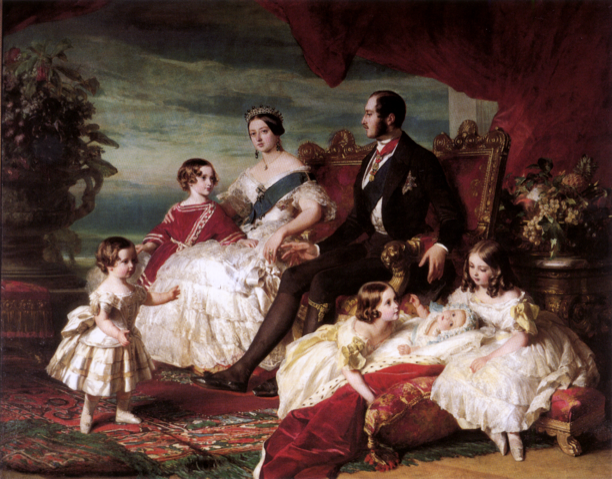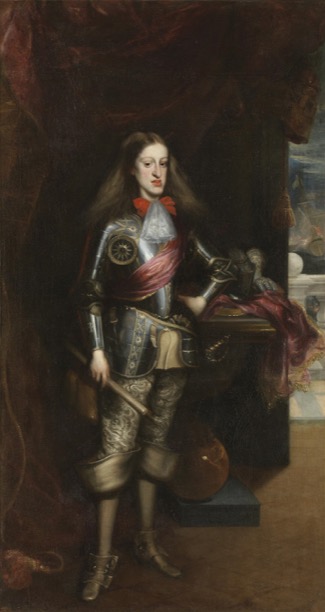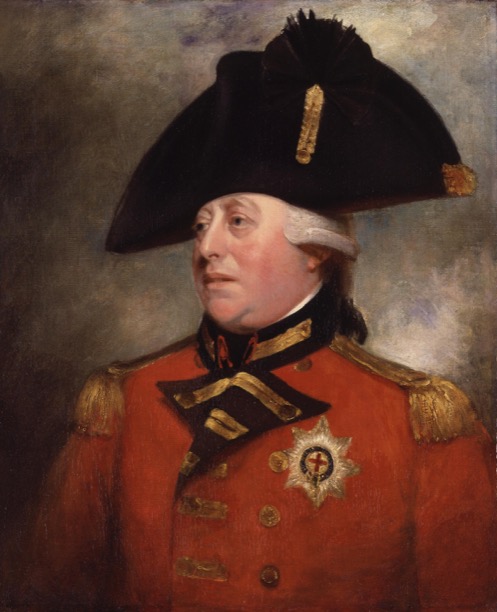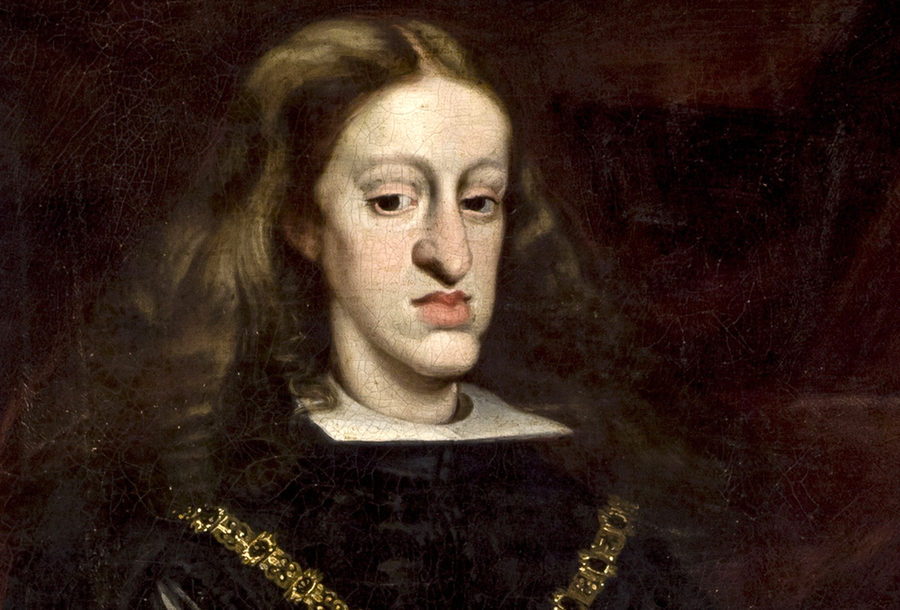From the Spanish Habsburgs to Queen Victoria’s grandchildren, how centuries of inbreeding and genetic mutation led Europe’s royal families to ruin
He endured violent convulsions and hallucinations, and his pronounced underbite and engorged tongue meant he was unable to close his teeth together. The malformed jaw made eating and talking nearly impossible, and he suffered uncontrollable
spells of diarrhoea and vomiting.
It was rumoured that he was bewitched; his painful and disfigured body the result of witchcraft, a curse, or the ritual consummation of the brains of criminals that he had devoured in hot chocolate drinks. But the truth was just as unsavoury and much closer to home. Charles II of Spain’s birth defects were the result of the accumulation of over two centuries of inbreeding.
Charles was unable to speak at all until he was four, and it wouldn’t be until the age of eight that he would take his first steps. He was born to Philip IV of Spain (1605-1655) and Mariana of Austria (1634-1665); a matrimony of uncle and niece, which made young Charles not only their son but also their great-nephew and first cousin respectively. Unfortunately their consanguineous marriage was not a solitary ill-fated pairing. Instead it had become a habit in the Habsburg family, especially the Spanish line. Incestuous relationships had been so common in his dynasty and for so long that by the time Charles II was born he was more inbred than a child whose parents were brother and sister.
In Europe, royal inbreeding to one degree or another was most prevalent from the Medieval era until the outbreak of the First World War. Unable to marry commoners and faced with a dwindling dating pool of royals of equivalent social status – especially as Reformation and revolution diminished the available stock increasingly rapidly from the 16th century onwards – the only viable option was to marry a relative.
Those expected to succeed to the throne were unable to make morganatic matches – unions between royals and those of lesser rank. But even when the bride or groom-to-be held the title of prince or princess, unequal unions were discouraged. It was a surprisingly nuanced affair and could make or break a regime’s legitimacy. Queen Victoria’s (1819-1901) marriage to her first cousin Prince Albert (1819-1861) in 1840 was controversial, not because of their close kinship but because while she was the descendant of a king (George III of Great Britain), and was born a royal princess (Her Royal Highness), he was the son of the Duke of Saxe-Coburg-Saarfield, one of myriad minuscule German principalities. While still a prince Albert was a prince of a very different – lesser – magnitude and styled as His Serene Highness instead.
The worst this union caused Victoria and Albert was social awkwardness, but for more fragile regimes in more tempestuous political climates the need to marry royal princes to royal princesses of the correct denomination of Christianity, saw them look along their own family lines for unattached blue bloods of appropriate pedigree.

While the practice of marrying blood relatives served a dynastic purpose to preserve privilege and power within family lines (particularly useful in an era where noblewomen wielded little direct influence, save as matchmakers or regents for their underage offspring), the Habsburgs indulged the custom with particularly reckless abandon. This led to the eventual extinction of an entire branch of the family.
The Spanish Habsburg dynasty was effectively founded by Holy Roman Emperor Charles V (1500-1558), who through various canny marital hookups found himself heir to three families: his own which dominated central Europe, the House of Valois-Burgundy, which dominated the low countries, and the House of Trastámara which ruled Spain and its overseas empire in America and Asia. This concentration of power proved too much for one man and he was succeeded by his young brother Ferdinand I (1503-1564) as Archduke of Austria and King of Hungary, and on his older brother’s death Holy Roman Emperor. The title of King of Spain and the lands associated with it, be they in the Netherlands, South America or Sicily, continued down Charles V’s line.
Each branch ran in parallel, and there was always someone to marry from the other side of the family. Over the next 200 years a total of 11 marriages were contracted by the Spanish Habsburg kings. Most of these marriages were consanguineous unions, with nine occurring in a degree of third cousins or closer.
The Habsburgs’ territorial acquisition via marriage became so established that the dynasty gained a motto attributed to their tactics, “Bella gerant alii, tu, felix Austria, nube!” (“Let others wage war. You, happy Austria, marry!”).
A typical story of what became a very tangled family tree can be seen with Charles V and his wife Isabella of Portugal (1503-1529). They had two children – Philip II of Spain (1527-1598), and a daughter Maria of Austria (1528-1603). The dynasty feared that if Philip died before he had a male heir, Spain would be lost. So the decision was made to marry Maria to her first cousin Maximilian II (1527-1576). As the eldest son to Ferdinand I, Maximilian II had inherited their central European titles and lands after his father’s death, and so the Holy Roman Emperor married his own eldest daughter, Anna of Austria (1527-1576), back to the other side of the family to her uncle, Philip II of Spain (1527-1498). This acted as insurance after Philip II’s third wife, Elisabeth, died in childbirth, leaving him widowed with two daughters.
These intermarriages crossing from one side of the family to the other repeat over the generations, either between uncles/aunts and nephews/nieces or between cousins. But, unbeknownst to the royal family, they had started to pass down more than crowns, crests and other baubles to their descendants. In the 16th century, the Holy Roman Emperor Charles V had once ruled much of what is now Germany, Hungary, the Czech Republic, Spain, the Netherlands, Belgium, southern Italy, western Poland, and emerging colonies in America and Asia. His was the first empire upon which “the sun never set”. But a century later, the genetic line had deteriorated so severely that the final male heir was physically incapable of producing children. Subsequently bringing an end to Spanish Habsburg rule and the family branch became extinct.

When a child is born they contain a shuffled mix of combined genetic material their two parents. But when the gene pools in two people are very similar there is a higher chance that the child will inherit something dangerous. Either arising as a spontaneous mutation or lurking dormant for generations, aggressive inherited diseases are usually ‘recessive’ and require both parents to be carriers of the genetic condition for it to be passed along to their offspring. As carriers do not have symptoms of the disease the parents are often oblivious to the deadly combination of code they will pass onto their offspring.
While these diseases are usually rare, when two individuals are related the chances are higher that they will have the same dangerous genes. The closer the genetic relationship, the higher the genetic similarity. While third cousin matches might be safe the risk is significantly ramped up when the blood relatives are even closer, such as siblings. It starts to become an even bigger problem when not only your father is your uncle, but your grandmother is also your aunt as in the case of Charles II of Spain.
When a family has a history of generations of inbreeding these recessive mutations start appearing more frequently until a child is born that is battling myriad diseases.
Children unlucky enough to be born as a result of incestuous pairings are substantially more likely to suffer from congenital birth defects and will be at a higher risk of infant loss, cancer, and reduced fertility. In the Spanish Habsburgs the most distinctive effect of inbreeding was the ‘Habsburg jaw’. Medically known as mandibular prognathism, the defect is commonly associated with inbreeding, and like many other rare diseases, is a trait associated with recessive genes.
In the case of Charles II of Spain, there are two genetic diseases that are believed to have contributed to his demise: combined pituitary hormone deficiency, which causes infertility, impotence, weak muscles, and digestive problems, and distal renal tubular acidosis, which causes bloody urine, rickets, and a large head relative to one’s body size.
It was not just the Habsburgs that were plagued with diseases and deformities at the hands of inbreeding. Queen Victoria likely developed a spontaneous mutation in her genes that caused her to carry the genetic disease haemophilia. The rare bleeding disorder that prevents the blood from clotting effectively causing its victims to bleed out, and the most trivial of bumps to produce internal haemorrhaging. Queen Victoria married her first cousin who was also a carrier of the fatal disease. When the two sets of genes combined in their children the disease fired into action and the pair subsequently spread the condition throughout European royalty, to Spain, Germany and Russia. One of Victoria’s own children died from complications due to haemophilia, while a further five grandchildren succumbed in the following decades.

George III is thought to have been affected by another recessive disease – porphyria – which is caused by the inheritance of two recessive genes and characterised by blue urine and insanity. Porphyria was common in the highly inbred House of Hanover. Victoria is also believed to have bequeathed porphyria to some of her descendants, most dramatically the German House of Hohenzollern (already descended from George I of Great Britain) where it may have contributed to Kaiser Wilhelm II’s erratic behaviour in the years leading up to the First World War. In November 1908, Reginald Brett, 2nd Viscount Esher – courtier and confidant of Britain’s Edward VII – speculated as much, writing in his diary, “I am sure that the taint of George III is in his blood.”
Queen Victoria’s eldest daughter, Princess Victoria, also showed the same tell-tale symptoms of porphyria. She had been married off to Frederick III, the first German Kaiser, their union resulted in the unpredictable Wilhelm II and sickly Princess Charlotte. The princess spent her life suffering from abdominal pains, blisters around her face, and dark red urine.
The undiagnosed ailment was passed onto her daughter Princess Feodora of Saxe-Meiningen, who committed suicide in 1945, and a 1998 analysis of her remains proved inconclusive.
For the Spanish Habsburgs though, their story ended on 1 November 1700. While Charles II was married twice, in 1679 to Marie Louise of Orléans (1662-1689) and after her death to Maria Anna of Neuburg (1667-1740), he had never conceived a child and was in all likelihood unable to do so. He had spent most of his reign powerless, with others acting as regent. He retired young, unable to cope with the demands of being a ruler, with a frail and feeble body that had started to crumble. He had come to resemble an elderly man and was almost completely immobile due to the oedema swelling in his legs, abdomen, and face. He died bald, senile, and impotent, aged just 38.
For Charles II, his life was difficult and tragically short. The true extent of his conditions were not revealed until a grisly autopsy that stated his body “did not contain a single drop of blood; his heart was the size of a peppercorn; his lungs corroded; his intestines rotten and gangrenous; he had a single testicle, black as coal, and his head was full of water”.
Originally printed in All About History 73
Subscribe to All About History now for amazing savings!

